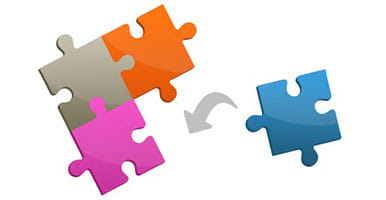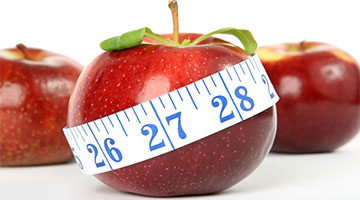BMI stands for Body Mass Index. BMI indicates how heavy a child is relative to their height, and is recommended by the World Health Organisation (WHO) as a better indicator of over- or under-weight than weight alone.
BMI is calculated as weight (kg) / height (m2). For example, if a 3-year old child weighs 15kg and is 96cm tall, their BMI would be calculated as follows:
15 / (0.96 X 0.96) = 16.3
In can be fiddly to work this out on a calculator, since you first need to calculate 0.96 X 0.96 then remember this figure to divide the weight by. But by changing the equation around, you can work out BMI easily on a calculator:
- Enter the weight (kg)
- Divide by height (remember this is in metres not centimetres)
- Divide the result by height
Try this calculation out for a child who weighs 15kg and is 96cm tall, you will see your result is the same as above (BMI 16.3).
Activity
Try out the above calculation for your own weight and height. What is your BMI?
For adults, WHO provides clear BMI classifications to determine if someone is underweight (<18.5), healthy weight (18.5-24.9), overweight (25-29.9) or obese (30+). Because children are still growing however, their BMI needs to be converted to a centile to determine if their weight is healthy for their age and sex. This is because BMI varies throughout childhood, and depending on whether children are boys or girls.
BMI centile charts can be used to work out if a child’s BMI is healthy for their age and sex. The attached charts show BMI centiles for boys and girls aged 2-20 years, based on a large database of UK children from 1990. You will notice the charts are curved rather than linear. This is because after their first year, children naturally lose body fatness up until the age of 5-6 years, when children are at their leanest (this time is called ‘adiposity rebound’). After 5-6 years, BMI starts to increase gradually through to adulthood. Therefore a healthy BMI range for a 4-year old girl (approximately 13.5-18.5) will be much lower than a healthy BMI range for a 16-year old girl (approximately 16.5-24.5).
The following BMI cut-offs are used to diagnose overweight:
> 91st centile = overweight
> 98th centile = very overweight (clinically obese)
> 99.6thcentile = severely obese
The following BMI cut-offs are used to diagnose underweight:
< 2nd centile = this is unusual and may reflect undernutrition, but may also be due to the child having a small build
< 0.4th centile = likely to have additional issues that require medical or dietetic attention
Activity
Look at the BMI centile charts for girls and boys aged 2-20 years and answer the following questions. Once you have completed these yourself you can check your answers here. These questions are focused on older children to help you understand how healthy BMI varies with age and sex.
- If an 8.5 year old girl has a BMI of 23, would she have healthy weight, overweight, very overweight or severe obesity?
- If she maintains a BMI of 23, at what age would she become a healthy weight?
- If a 6 year old girl has a BMI of 19, does she have healthy weight, overweight, very overweight or severe obesity?
- If a 6 year old boy has a BMI of 19, does he have healthy weight, overweight, very overweight or severe obesity?
To make it easier for health professionals, The Royal College of Paediatrics and Child Health (RCPCH) have produced growth charts that include BMI conversion charts (see figure 1 for an example of how to use these charts). These charts do not require professionals to calculate the actual BMI of the child, but an approximate BMI centile (accurate to quarter of a centile space) can be determined from the corresponding height and weight centiles.
For routine growth assessment
The recommended charts for plotting pre-school child growth are the UK WHO Growth Charts for 0-4 years:
For children 2 years and older, an alternative option is to use the UK Growth Chart for 2-18 years:
Both the 0-4 years and the 2-18 years charts include height and weight centiles, plus BMI conversion charts. The following factors will help you decide which is the most appropriate chart to use:
- Your professional role and standard protocols within your service. For example, if you are a health visitor your team may routinely use the 0-4 charts, whereas for GPs the 2-18 charts may be more relevant.
- Frequency and duration of support. The 0-4 chart is more sensitive for frequent monitoring, whilst the 2-18 chart will last throughout childhood.
- Age at which you start monitoring the child. If monitoring from birth the 0-4 chart should be used. If however you start monitoring after 2 years or have previously monitored on the Neonatal and Infant Close Monitoring chart, the 2-18 years chart may be appropriate.
If severe over- or underweight is a concern or if you wish to plot BMI over time
Whilst the 0-4 and 2-18 years growth charts include a BMI conversion chart, these charts do not allow BMI to be accurately monitored over time. Therefore if a child over 2 years is identified as having a weight concern their BMI can be monitored over time by using the BMI chart for children aged 2-20 years. This chart contains additional centile cut-offs for very high and very low BMIs to allow more sensitive monitoring of children with severe over- or underweight.
Note
If using the BMI chart to track change over time, it is important to continue to monitor height and weight on either the 0-4 or 2-18 years growth chart.
The charts in this section are provided by The Royal College of Paediatrics and Child Health (RCPCH) and can be freely downloaded for clinical use.
Click here for details of how to purchase hard copies or download high resolution images of the charts.




